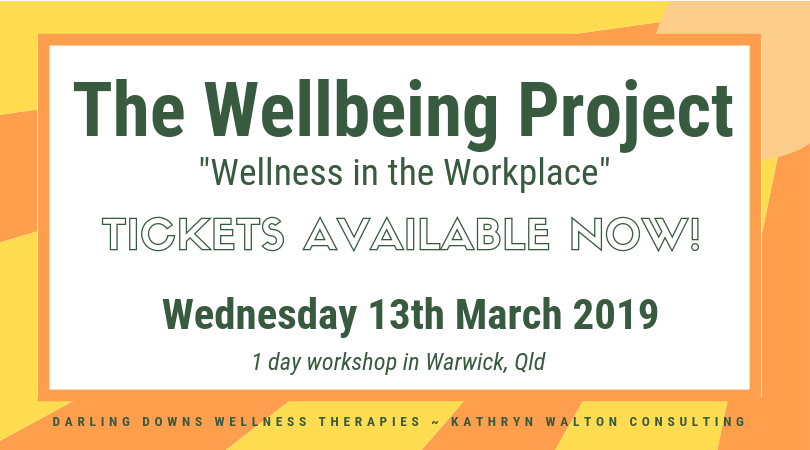In the same way that there are seasons in nature, so too there are seasons in life as a human living on Earth today. As I write this blog post, we’re in between climatic seasons. The days are still warm but not as hot as they were a few weeks ago. Some of the nights have a distinct chill in the air so there are whispers that winter is on its way.
 The season of autumn is on its way!
The season of autumn is on its way!
As I was walking last week I passed a tree which had some leaves that had begun yellow. This sign never fails to trigger a sense of joy and anticipation for me. Until I was in my mid to late twenties and had two young children, I’d always lived in temperate coastal regions. Sure, I’d travelled the country a bit, but had never lived anywhere that experienced all four seasons.
From two seasons to four!
When I moved from Brisbane to the Southern Downs region in southern Queensland on the lands of the Gidhabal people, it was mid winter. There was a thick layer of frost on the ground each morning, sometimes till mid-morning and it was such a thrill to see it and feel it underfoot. I’d never seen thick frost before and this white coating on the ground and the cars and the windows was completely foreign to me. When I looked up close I could see the intricate patterns that combined together to form the frosty coating that gave everything an icy cold look. I simply loved it!
My first autumn was equally as exciting as my senses were captivated by the colours and textures of the leaves changing from green to yellow, red, orange and brown. And then slowly the leaves fell away, covering the ground with a striking layer of shapes that scrunched and crunched underfoot. One of my favourite autumn experiences still is to drive down one of the wide suburban streets in my town as the cold southerly wind funnels along the road, picking up the leaves that are delicately hanging onto the trees, and billowing them up into the air, swirling and whirling in a topsy turvy whirlwind until they slowly settle down onto the road and footpath, then scuttling along in waves as the south wind continues to breathe the first of winter.
All these sights, sounds, smells, textures and movements come back to me every autumn, so you can imagine how my body responded last week when I saw the very first signs of some leaves changing colour.
As my heart beat with excitement, I amused myself thinking about how here in Australia we call the coming season autumn, but in many other countries it’s known as fall. In my childhood I really didn’t ‘get’ it. After all, I wasn’t familiar with the leaf fall at the end of summer.
We all have internal seasons
Last week as I walked, I made a connection in my mind which resonated very strongly with me. We all have seasons in life, just as the climate has seasons.
Recently I’ve been working at letting go of some aspects of my life that I no longer need – projects that have completed, services that are no longer part of my core business, belongings that are unnecessarily taking up space. I’ve been in the season of autumn (or fall) and it feels so much lighter! Allowing things to fall away and making a conscious effort to seek out things I can declutter will give me more time and space to hunker down, conserve energy and focus on what matters most at this time in my life.
In the same way that you can’t really see what’s happening below ground or under the bark of the tree once it’s shed its leaves, I too am working away on projects that may not be obvious to anyone else but me. I know that this behind-the-scenes work is invisible but it’s vital. As I come out of my autumn and winter seasons and move into my season of spring, you’ll finally be able to see the new growth, the fruits I’m creating at the moment.
What season in life are you in?
Seasons are a normal and natural part of the outdoors life no matter where you live – whether you have the four seasons of summer, autumn, winter and spring, or perhaps the wet and dry seasons of the tropical regions, or perhaps you have the light and dark seasons if you live closer to the poles.
I wonder, what season are you living in right now? I mean, literally, what climatic season are you in ………..…..
………. and what season in life you are in?
Nature reminds us that seasons in life come and go
Literally or metaphorically, we all experience seasons in life, and connecting with nature all year round is a good reminder that seasons come and go and they each have a purpose. Where there’s an ending or a completion, there’s also a beginning, a renewal. And that means there’s always the opportunity for hope.
Send me an email: I’d love to hear your thoughts about seasons in nature and which season in life you’re in right now. I always love to hear from my readers and podcast listeners!
Listen to the audio version of this post in the Outdoors is my Therapy Podcast Episode 26!
 Discovering mountain biking as life’s ultimate parallel universe in her middle age, Kathryn Walton shares information and reflections that inform, inspire and empower women to a healthy and active lifestyle.
Discovering mountain biking as life’s ultimate parallel universe in her middle age, Kathryn Walton shares information and reflections that inform, inspire and empower women to a healthy and active lifestyle.













 thought, we often don’t even realise that we’ve grabbed hold of it. We can become firmly attached to it and we can have difficulty letting it go. We can find ourselves stuck, squirming and wriggling with the discomfort just as a fish does as it’s reeled in from the water.
thought, we often don’t even realise that we’ve grabbed hold of it. We can become firmly attached to it and we can have difficulty letting it go. We can find ourselves stuck, squirming and wriggling with the discomfort just as a fish does as it’s reeled in from the water. Daily practice of simply noticing your thoughts as they arise during an activity helps to train your brain to notice thoughts arising at other times, and to notice that they are simply thoughts or mental events. If you find the fish hook imagery useful, you can notice the hooks (or thoughts) being cast out, and you can notice which hooks (or thoughts) you cling on to.
Daily practice of simply noticing your thoughts as they arise during an activity helps to train your brain to notice thoughts arising at other times, and to notice that they are simply thoughts or mental events. If you find the fish hook imagery useful, you can notice the hooks (or thoughts) being cast out, and you can notice which hooks (or thoughts) you cling on to. Kathryn Walton shares information and reflections in Daisy Spoke that connect, inspire and self-empower women to make healthy choices for themselves.
Kathryn Walton shares information and reflections in Daisy Spoke that connect, inspire and self-empower women to make healthy choices for themselves.